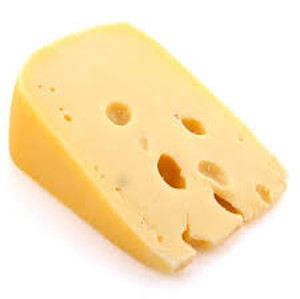 akers’ weapon against forgeries is housed at minus 80 degrees Celsius in a Bern freezer. It’s here where scientists keep 10,000 strains of milk bacteria to guard against copycats.
akers’ weapon against forgeries is housed at minus 80 degrees Celsius in a Bern freezer. It’s here where scientists keep 10,000 strains of milk bacteria to guard against copycats.The country’s cheese industry, worth 604 million Swiss francs in exports last year, has turned to DNA fingerprinting to fight counterfeits, which Emmental producers estimate have cost them as much as 20 million francs.
Forgeries are contributing to declining revenue for an industry that’s already beleaguered because of high production costs and the rise in value of the Swiss franc, which makes the country’s cheese more expensive abroad. About 10 per cent of cheese labeled as Swiss-made Emmental on supermarket shelves is fake, estimates the Switzerland Cheese Marketing association.
“If the cheese is an inferior fake, it ruins the reputation,” said Agnes Beroud, who works for the producers’ association for Tete De Moine cheese. “For us, it’s important to protect the traditional way of making the cheese.”
The Swiss have been producing cheese since at least the Middle Ages - with the first medieval mention of it dating to 1115. Today, makers of Emmental, Tete, Gruyere and other varieties must adhere to strict rules to guarantee purity. That raises production costs and means consumers pay a higher price.
Italian Fakes
It also opens the door to cut-rate forgeries falsely claiming to be made in Switzerland according to the country’s stringent standards, and compounds the challenge producers already face from cheeses with Swiss names, such as Emmental, that are legitimately produced elsewhere and cost less.
Bacterial fingerprinting started in 2011 with Emmental, the most widely exported Swiss cheese, after fakes surfaced in Italy. Tete de Moine, a round, semi-hard cheese made by only eight dairies in the Jura region, got its marker last year. Identifiers for Gruyere and Sbrinz are in the works.
To reach this point, a team of government scientists worked for a decade to identify the right type of bacteria. The challenge was finding some that wouldn’t alter the taste, texture or smell of Swiss cheese. Using a synthetic identifier wasn’t possible because additives are forbidden. The 10,000 strains in the Bern freezer were harvested decades ago, before the mass-use of antibiotics.
Protective Label
Today, only registered producers may order sachets of the bacteria. The scientists rotate among three DNA markers to ensure that even if a forger gets hold of a packet, it won’t be of much use. There are also spot checks in supermarkets.
“You take the cheese, extract the DNA and check for the presence of your marker,” said Deborah Rollier, one of the lead scientists for the project at Agroscope, the Swiss federal government’s institute for food science in Bern.
Traditional Swiss cheeses always bear the maker’s number and production date, though they’re usually cut into smaller chunks for sale to consumers, obliterating the label. Tete de Moine traditionally is shaved into slivers or rosettes using a device called a Girolle.
To qualify as true Tete, thus receiving a protective label that enables authorities both in Switzerland and the European Union to take legal action against counterfeits, production must be at a dairy located in the Jura.
Cheaper Knock-Offs
The milk for Tete may only come from cows within a 20-kilometre radius that feed on fresh grass and hay, not fermented stored fodder. Artificial ingredients, including preservatives, are forbidden. The regulations for Emmental and Gruyere are similarly strict.
“It has a deterrent effect, because people know there is a method” to catch fakes, said Petra Luedin, a project manager at Agroscope. “Fakes in Italy have declined.”
Taking on counterfeits is one aspect of the industry’s battle for customers, with consumers in recession-plagued Europe often opting for cheaper knock-offs. Emmental exports sank 18 per cent in volume terms in the first half of 2014, while the tonnage of exported Tete declined 3.4 per cent.
For the first time, Switzerland’s imports of cheese topped exports in June, the newspaper NZZ am Sonntag reported on 24 August, citing the industry association.







